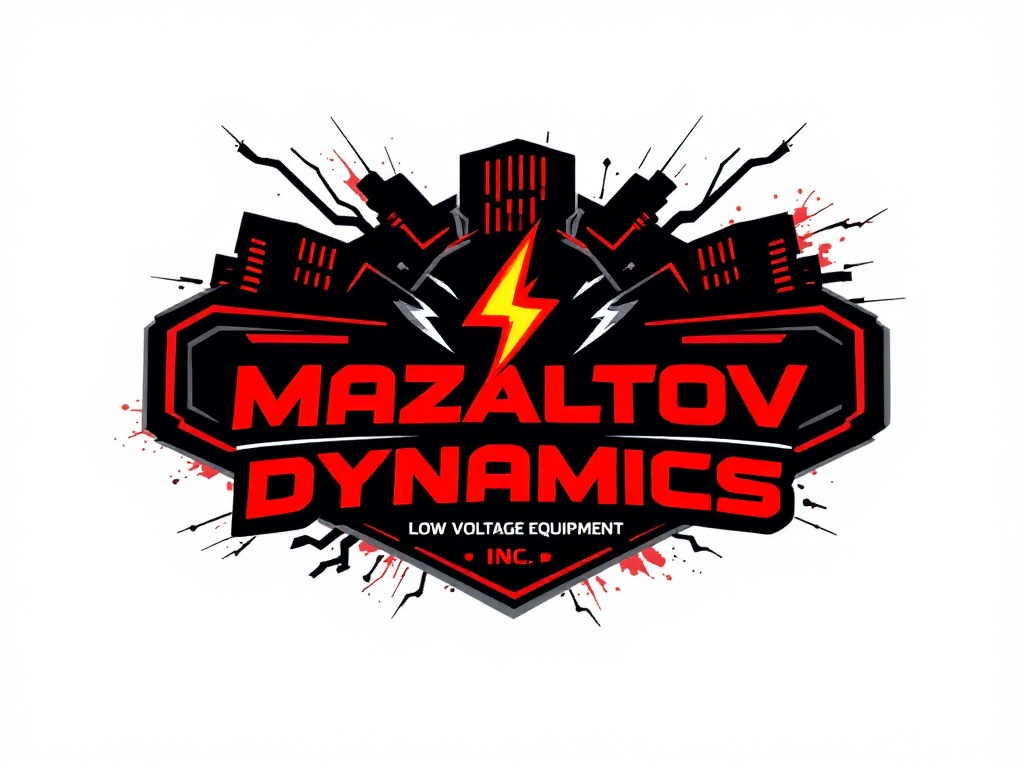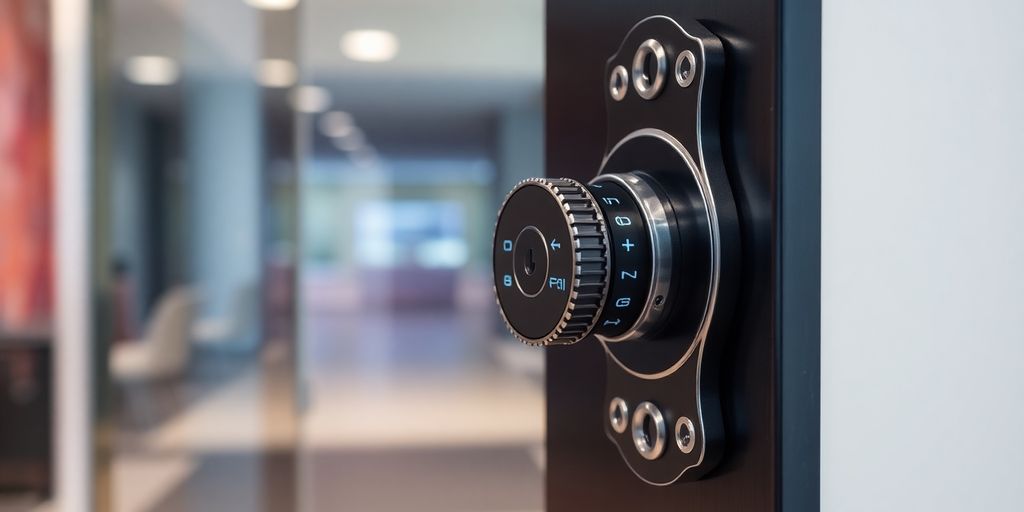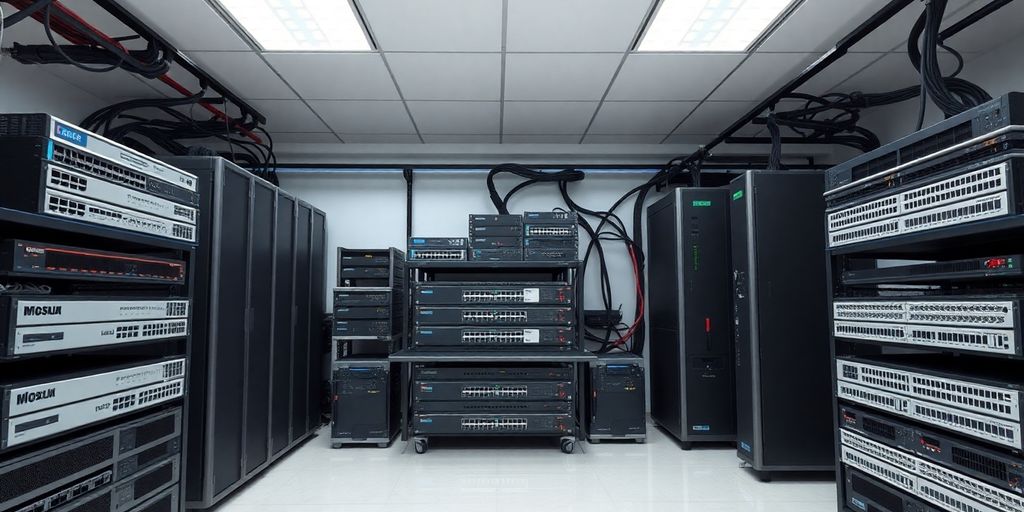Access Control Services are like the security guards of the digital world. They make sure that only the right people get in and keep the wrong ones out. In today’s tech-driven society, where everything’s connected, it’s super important to have these systems in place. They help protect sensitive information and keep businesses running smoothly. With the growing number of devices and remote work becoming the norm, managing who has access to what is more complicated than ever. Access Control Services are stepping up to the challenge, making sure that security stays tight and efficient.
Key Takeaways
- Access Control Services are essential for protecting sensitive information in a connected world.
- They help manage the growing complexity of access points due to remote work and mobile devices.
- Combining access control with other security measures enhances overall protection.
- Compliance with regulations like GDPR and HIPAA is crucial, and access control plays a key role.
- Technological advancements are making access control systems more effective and user-friendly.
The Role of Access Control Service in Modern Security
Understanding Access Control Mechanisms
Access control is all about deciding who gets in and who stays out. It’s like a bouncer for your company’s valuable stuff, both physical and digital. Imagine having a system that knows exactly who should be where and when. That’s what access control does. It uses tools like keycards, biometrics, and even PIN codes to keep track of who enters restricted areas. This way, only the right people get access, and everyone else is kept out. It’s not just about locking doors; it’s about managing access smarter and safer.
Key Benefits of Implementing Access Control
- Enhanced Security: By controlling access points, businesses can significantly reduce unauthorized entry. This means fewer chances for bad actors to get in.
- Operational Efficiency: With access control, you don’t need to worry about lost keys or changing locks every time an employee leaves. Everything is managed digitally.
- Flexibility and Scalability: Whether you’re a small office or a large corporation, access control systems can be tailored to fit your specific needs and grow with your business.
Access control is not just a security measure; it’s a way to streamline operations and reduce risks. By knowing who is where and when, companies can protect their assets and ensure that everything runs smoothly.
Challenges in Access Control Management
Managing access control isn’t without its hurdles. As businesses expand and technology evolves, keeping up with new security threats can be daunting. The more access points there are, the harder it is to manage them all effectively. Plus, integrating new technologies like identity management and zero trust can be complex. It’s a balancing act between maintaining security and ensuring that the system is user-friendly.
In today’s world, access control is crucial for protecting both physical and digital assets. It’s not just about keeping the bad guys out; it’s about making sure that the right people have access to the right resources at the right time.
Integrating Access Control with Other Security Measures
Combining Access Control with Surveillance Systems
Integrating access control systems with surveillance tools like CCTV and alarms is a game-changer for security management. This combination provides a more comprehensive security solution by not just controlling entry but also monitoring real-time activities. Imagine a scenario where an unauthorized access attempt triggers cameras in the area, capturing crucial evidence. This synergy enhances the ability to respond swiftly and effectively to security breaches.
- Real-time Monitoring: Cameras can provide live feeds, allowing security personnel to assess situations quickly.
- Automated Alerts: When access control systems detect anomalies, they can automatically alert security teams.
- Enhanced Evidence Collection: Integrated systems ensure that all security incidents are recorded, providing valuable data for investigations.
Enhancing Security with Multi-Factor Authentication
Access control systems are much more secure when combined with multi-factor authentication (MFA). This approach requires users to verify their identity through multiple methods, making unauthorized access significantly harder. For example, an employee might need to swipe a card and then enter a code sent to their phone.
- Increased Security: MFA adds layers of security, making it tougher for intruders to gain access.
- User Accountability: By requiring multiple credentials, users are more accountable for their access.
- Flexibility: MFA can be tailored to different security needs, whether for high-security zones or general access areas.
The Importance of Real-Time Monitoring
Real-time monitoring is a critical component of modern security strategies. By integrating access control with monitoring systems, organizations can keep a constant watch on access points and respond immediately to any irregularities.
In today’s fast-paced environment, having the ability to monitor and react to security threats as they happen is invaluable. This proactive approach not only deters potential breaches but also minimizes damage if they occur.
- Immediate Response: Quick detection and response can prevent security incidents from escalating.
- Continuous Surveillance: Ensures that all access points are under constant watch.
- Data Analysis: Monitoring systems can collect data over time, helping to identify trends and potential vulnerabilities.
By integrating access control systems with security tools, organizations can create a robust security network that not only protects assets but also enhances overall security management.
Access Control Service and Regulatory Compliance

Meeting GDPR and HIPAA Requirements
Access control isn’t just about keeping unauthorized folks out; it’s a big part of staying on the right side of the law. Regulations like GDPR and HIPAA make it clear that protecting personal data is non-negotiable. Access control systems are vital in ensuring that only the right people have access to sensitive information. This means setting up strict authentication processes and keeping a close watch on who gets in and out of your systems. If you’re handling personal data, you better be sure that your access controls are up to snuff.
Ensuring Data Protection Through Access Control
When it comes to data protection, access control is your first line of defense. By implementing robust access control measures, you can significantly reduce the risk of unauthorized access to sensitive data. Here’s a quick rundown of how access control helps:
- Authentication: Verify the identity of users before granting access.
- Authorization: Ensure users have permission to access specific resources.
- Audit: Keep track of access patterns to identify any suspicious activity.
The Consequences of Non-Compliance
Failing to comply with access control regulations can lead to some serious repercussions. We’re talking hefty fines, legal battles, and a big hit to your reputation. Non-compliance doesn’t just hurt your wallet; it can erode trust with your clients and partners. Companies need to understand that neglecting access control can have long-lasting effects that go beyond financial penalties.
In today’s digital world, maintaining compliance with access control regulations is not just about avoiding fines; it’s about building trust and ensuring the security of sensitive information. Organizations must prioritize access control to protect their data and reputation.
Technological Advancements in Access Control Systems
The Rise of Biometric Access Control
Biometric access control is becoming more popular, with things like fingerprint scanning and facial recognition leading the way. These systems are not just about security; they make life easier by letting people in without needing keys or cards. Imagine walking into your office with just a glance at a camera or a touch of your finger. That’s the future! But it’s not just cool tech; it also means fewer lost cards and better security because it’s hard to fake a fingerprint or face.
Leveraging AI and Machine Learning in Security
AI and machine learning are shaking things up in access control. These technologies help predict and stop unauthorized access before it happens. For example, if someone tries to enter a building at an unusual time or in a way that’s not typical, the system can flag it. AI can also help manage who gets in and out by learning from past patterns, making the whole process smoother and more secure.
Future Trends in Access Control Technology
Looking ahead, key access control trends for 2025 include touchless entry and access technology, remote management and security, unified security systems, and AI-powered solutions. These advancements mean more convenience and better security. Imagine being able to control who enters your building from anywhere in the world or having a system that works seamlessly with other security measures. That’s where we’re headed, and it’s exciting!
Implementing Access Control in Commercial Properties
Strategies for Effective Access Control Deployment
When it comes to commercial access control systems, businesses need to think strategically about their deployment to ensure optimal security. A well-planned access control strategy can significantly reduce the risk of unauthorized entry and protect valuable assets. First, assess the specific security needs of your property. Identify areas that require restricted access, such as data centers or executive offices. Next, choose a system that matches your requirements and budget—options include keycard systems, biometric scanners, or mobile-based solutions. Finally, ensure professional installation to integrate the system seamlessly with existing security measures.
Training Employees on Access Control Systems
Once your access control system is in place, it’s crucial to train employees on how to use it effectively. This training should cover how to use the system, recognize potential security threats, and respond appropriately. Regular training sessions can help staff stay updated on any changes to the system or security protocols. By empowering employees with the knowledge to use these systems correctly, businesses can enhance their overall security posture.
Maintaining and Updating Security Protocols
Maintaining and regularly updating your access control systems is vital for ensuring long-term security. Conduct regular audits to identify any vulnerabilities or areas for improvement. Update software and hardware components as needed to keep up with technological advancements and emerging threats. Regular maintenance not only ensures the system’s effectiveness but also extends its lifespan, providing a reliable security solution for years to come.
Implementing a robust access control system is not just about technology; it’s about creating a culture of security within the organization. By involving everyone in this effort, businesses can create a safer and more secure environment for their employees and assets.
Access Control Service in the Digital Age
Protecting Digital Assets with Access Control
In today’s digital world, protecting digital assets is more crucial than ever. With so much sensitive information being stored online, businesses must ensure that only authorized individuals can access critical data. Modern access control systems, which include biometric authentication and multi-factor authentication, offer robust protection against unauthorized access. These systems not only secure digital data but also help in safeguarding physical assets by controlling who can enter specific areas.
The Role of Access Control in Cybersecurity
Access control plays a pivotal role in cybersecurity strategies by minimizing the risk of unauthorized access. By implementing strict access control measures, organizations can ensure that only those with the necessary permissions can access sensitive information. This also helps in compliance with regulations such as GDPR and HIPAA, which mandate stringent access control measures to protect personal data. Non-compliance can lead to severe penalties and reputational damage.
Addressing Emerging Security Threats
As cyber threats evolve, so must the strategies to combat them. Access control systems need to be adaptable to address emerging security threats effectively. This includes integrating new technologies such as AI-enabled anomaly detection, which enhances digital access systems by monitoring user behavior patterns to identify threats in real-time. Such proactive measures enable organizations to respond automatically to potential security breaches, ensuring continuous protection of digital assets.
Best Practices for Access Control Service

Developing a Comprehensive Access Control Policy
Creating a solid access control policy is like building the foundation of a house. Without it, everything else can crumble. Start by defining who needs access to what resources and why. Make sure roles are clearly outlined, and permissions are assigned based on necessity. A well-crafted policy ensures that only the right people have access to the right resources.
Regular Audits and System Updates
Think of audits like routine check-ups for your system. They help you catch issues before they become big problems. Conduct regular reviews of access logs and permissions to ensure compliance with your policies. Keep your systems updated to protect against vulnerabilities. Regular updates and patches are crucial to prevent unauthorized access.
Balancing Security and User Convenience
Security is important, but if it makes life too hard for users, they’ll find ways around it. Aim for a balance between security and convenience. Implement multi-factor authentication to add a layer of security without being overly burdensome. Consider user feedback when designing access control measures to ensure they are user-friendly.
"Access control is essential for ensuring that only authenticated and authorized individuals can access specific systems, spaces, or information." Access control is not just about keeping the bad guys out; it’s about letting the right people in.
By following these best practices, organizations can enhance their security posture while ensuring that access control measures are practical and effective.
Conclusion
In today’s world, where technology is rapidly evolving, access control services have become a cornerstone of modern security strategies. With the rise of remote work, cloud computing, and mobile devices, the number of access points to sensitive information has skyrocketed. This makes it crucial for businesses to adopt robust access control measures. These systems not only help in preventing unauthorized access but also ensure compliance with regulations like GDPR and HIPAA. By implementing effective access control, organizations can protect their data, maintain operational efficiency, and build trust with their clients. It’s clear that as threats continue to grow, the role of access control in safeguarding assets and information will only become more vital.
Frequently Asked Questions
What is access control and why is it important?
Access control is a security measure that helps manage who can enter or use certain resources. It’s important because it keeps unauthorized people out, protecting sensitive information and areas.
How does access control work?
Access control works by checking if a person or system is allowed to enter or use a resource. This is done through methods like passwords, keycards, or biometric scans.
What are the benefits of using access control?
The benefits include improved security, keeping track of who enters and exits, and making sure only the right people can access certain areas.
What are some challenges of access control management?
Challenges include dealing with many access points, keeping systems updated, and ensuring that only authorized people have access.
How does access control help with regulatory compliance?
Access control helps meet rules like GDPR and HIPAA by protecting personal data and ensuring that only authorized people can access it.
What are future trends in access control technology?
Future trends include more use of biometrics, artificial intelligence, and machine learning to make access control more secure and efficient.



